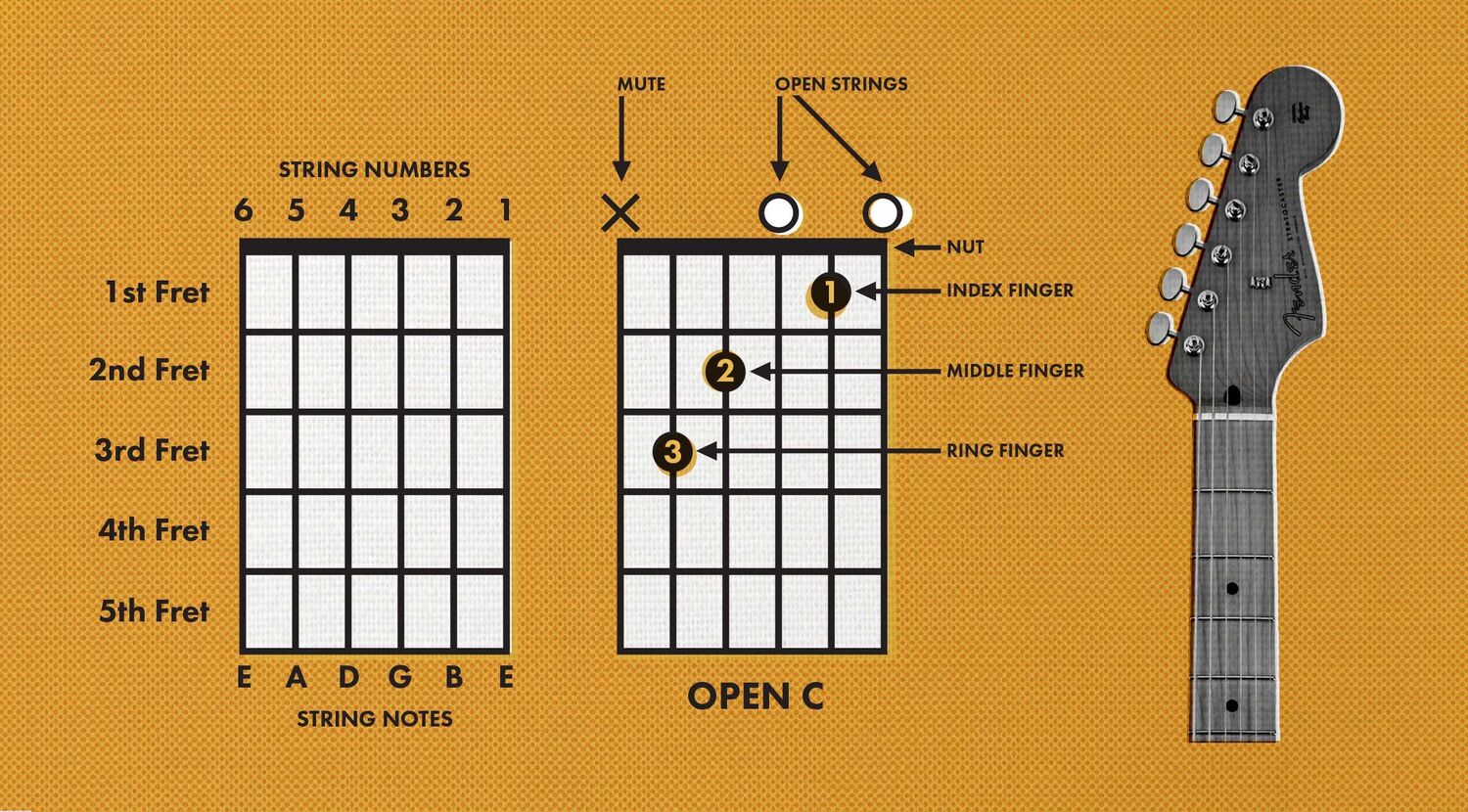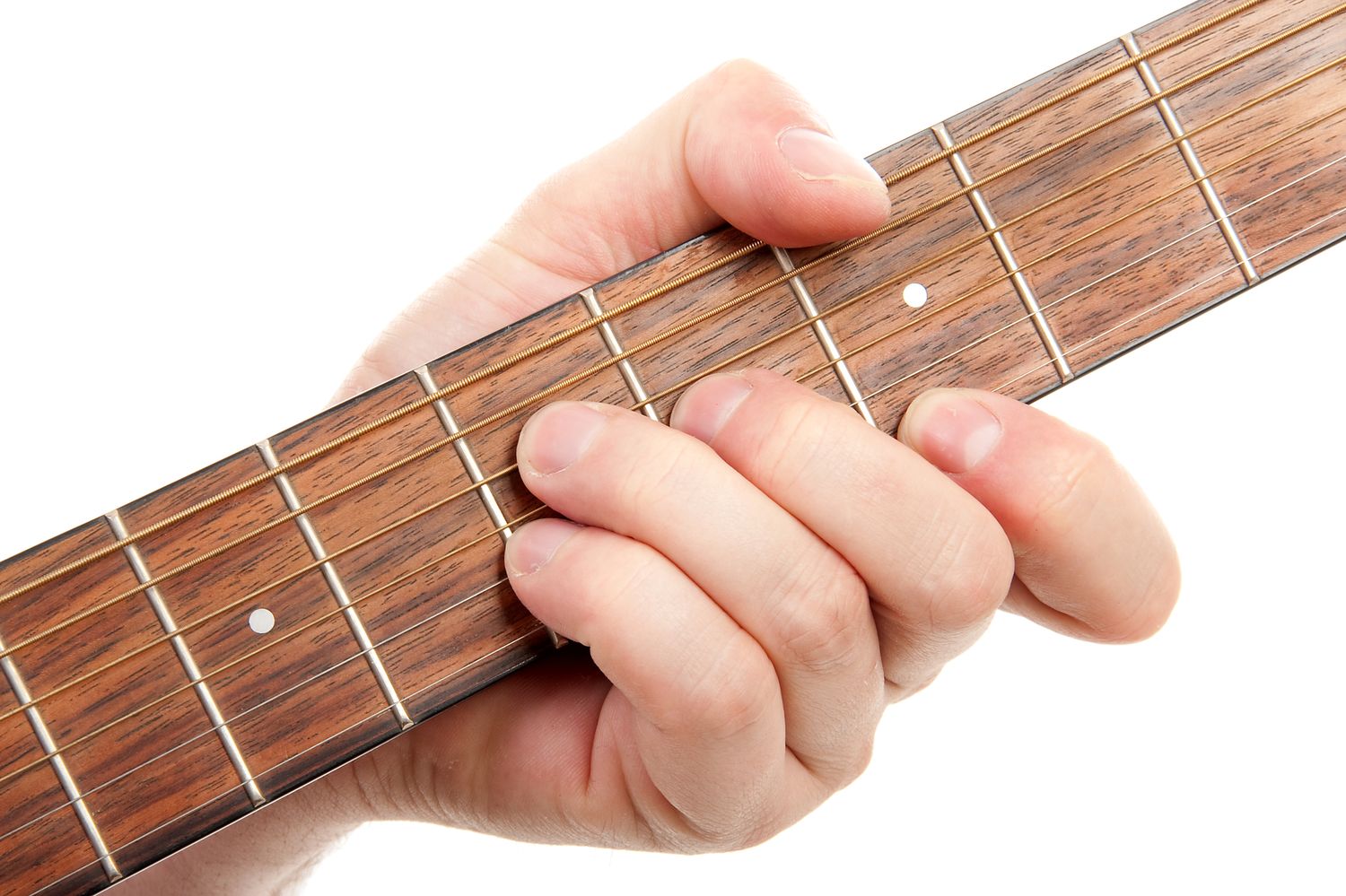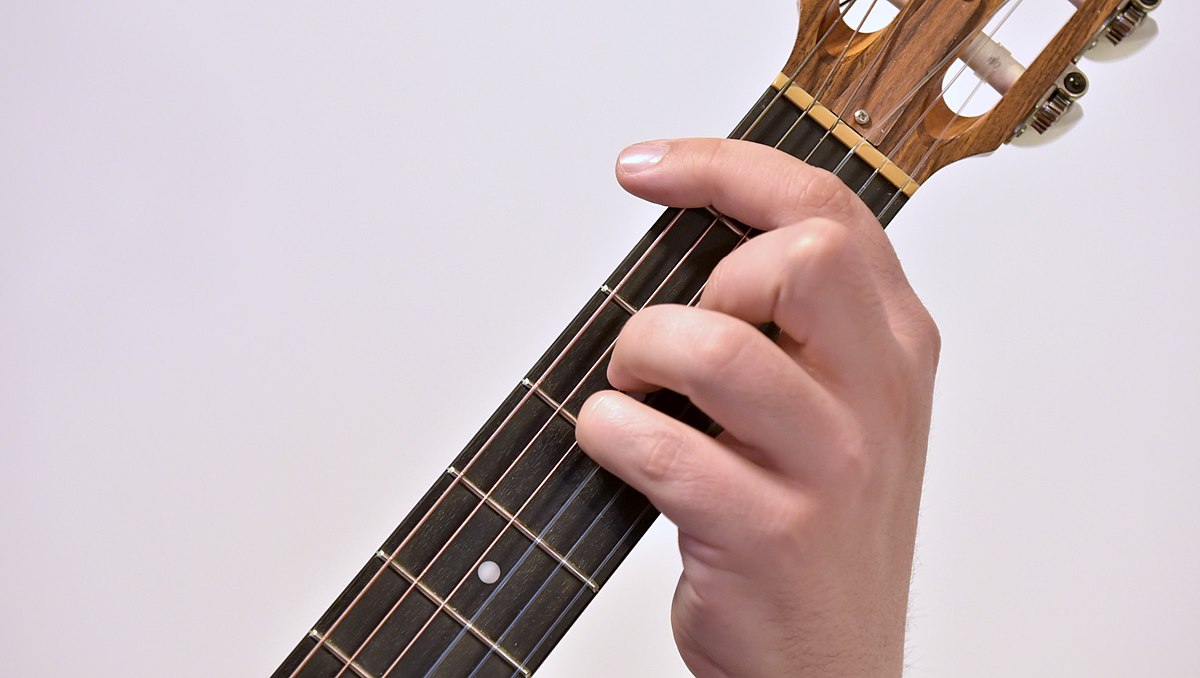Home>Instruments>Guitar>How To Memorize Guitar Chords


Guitar
How To Memorize Guitar Chords
Published: February 13, 2024
Learn how to easily memorize guitar chords with our step-by-step guide. Master the guitar and impress your friends with your skills. Discover effective memorization techniques now!
(Many of the links in this article redirect to a specific reviewed product. Your purchase of these products through affiliate links helps to generate commission for AudioLover.com, at no extra cost. Learn more)
Table of Contents
Introduction
Learning to play the guitar is a rewarding journey filled with excitement and challenges. One of the fundamental aspects of mastering this versatile instrument is memorizing guitar chords. Whether you're a beginner or an intermediate player, developing a strong command of chords is essential for creating captivating music.
Understanding and memorizing guitar chords can seem daunting at first, but with the right techniques and consistent practice, it becomes an achievable feat. This article will delve into effective strategies to help you memorize guitar chords more efficiently, allowing you to progress in your musical endeavors.
Memorizing chords not only enhances your playing ability but also boosts your confidence as a guitarist. As you commit various chord shapes and progressions to memory, you'll find yourself seamlessly transitioning between chords, ultimately enriching your musical expression. By mastering this skill, you'll be better equipped to play a wide range of songs and even create your own music with ease.
Throughout this article, we'll explore the intricacies of guitar chords, delve into proven memorization techniques, discuss strategies for effective practice, and provide valuable tips for retaining chord knowledge. By the end, you'll have a comprehensive understanding of how to memorize guitar chords and be well-equipped to embark on this enriching musical journey.
Understanding Guitar Chords
Before delving into memorization techniques, it’s crucial to grasp the fundamentals of guitar chords. A chord is a set of three or more notes played simultaneously, creating a harmonious sound. In the context of the guitar, chords are formed by pressing down on specific frets across multiple strings, producing various harmonic combinations.
Guitar chords are typically constructed from a selection of notes derived from the major or minor scales. Major chords emit a bright and uplifting sound, while minor chords evoke a more melancholic or introspective feel. Additionally, there are dominant, diminished, and augmented chords, each contributing distinct tonal qualities to music.
Understanding chord structure is integral to memorization. Each chord has a unique formation, represented by a specific finger placement on the fretboard. For instance, the C major chord involves positioning fingers in a particular configuration, while the G major chord requires a different hand shape. Familiarizing yourself with these shapes and their corresponding names lays a solid foundation for memorization.
Furthermore, chords are often depicted in chord diagrams, which visually illustrate the finger positions on the fretboard. These diagrams serve as valuable references, aiding in the visualization and memorization of chord shapes. As you progress in your guitar journey, you’ll encounter an extensive repertoire of chords, each contributing to the richness of your musical repertoire.
By comprehending the essence of guitar chords and their role in music, you’ll develop a deeper appreciation for their significance. This understanding forms the bedrock for effective memorization, enabling you to approach chord mastery with clarity and purpose.
Memorization Techniques
Memorizing guitar chords necessitates employing effective techniques that cater to diverse learning styles. Here are several proven methods to aid in the memorization process:
- Visual Association: Associating chord shapes with visual patterns on the fretboard can enhance memorization. Visualizing the placement of fingers and the geometric arrangement of notes fosters a deeper understanding of chord structures.
- Chunking: Breaking down complex chords into smaller segments, or “chunks,” facilitates easier memorization. By mastering individual segments before integrating them into the complete chord shape, you can gradually internalize intricate formations.
- Repetition and Muscle Memory: Consistent practice and repetition are vital for ingraining chord shapes into muscle memory. Regularly transitioning between chords reinforces neural pathways, leading to smoother and more intuitive finger movements.
- Chord Progressions: Practicing chord progressions within songs or exercises aids in contextualizing chord memorization. By integrating chords into musical sequences, you reinforce their relationships and develop a holistic understanding of their applications.
- Utilize Mnemonics: Creating mnemonic devices, such as acronyms or memorable phrases, can assist in recalling chord names and finger placements. Mnemonics add a playful element to memorization, making the process more engaging and effective.
It’s essential to explore and combine these techniques to align with your individual learning preferences. Some learners may gravitate towards visual methods, while others may benefit more from tactile or auditory approaches. Adapting these techniques to suit your learning style can significantly enhance the memorization process.
Additionally, leveraging digital resources such as interactive chord libraries, mobile apps, and online tutorials can supplement traditional memorization methods. These resources offer interactive visual aids, audio demonstrations, and practice exercises, augmenting the learning experience and reinforcing chord retention.
By incorporating a blend of mnemonic devices, visualization, tactile reinforcement, and digital tools, you can cultivate a robust foundation for memorizing guitar chords effectively and enjoyably.
Practice Strategies
Effective practice is pivotal in solidifying chord memorization and honing your guitar skills. Implementing strategic practice routines can significantly enhance your proficiency. Here are key strategies to optimize your practice sessions:
- Structured Repetition: Devote focused practice sessions to specific chord families or progressions. By systematically revisiting and reinforcing chords, you reinforce muscle memory and strengthen your grasp of different chord types.
- Metronome Integration: Incorporating a metronome into your practice sessions cultivates rhythmic precision and enhances chord transitioning. Gradually increasing the tempo challenges your coordination and fosters fluency in chord changes.
- Chord Switching Drills: Dedicate time to targeted chord switching exercises. Select two or more chords and practice transitioning between them fluidly. This targeted approach accelerates your ability to navigate between different chord shapes seamlessly.
- Contextual Application: Integrate chord practice into actual songs or musical contexts. Applying chords within melodies or chord progressions from your favorite tunes imbues your practice with musical relevance and fosters a deeper connection to the chords.
- Progressive Challenges: Gradually introduce more complex chord shapes and progressions as you advance. Embracing a progressive approach keeps your practice dynamic and continually expands your chord repertoire.
Furthermore, maintaining a consistent practice schedule is paramount. Regular, shorter practice sessions often yield better results than infrequent, lengthy sessions. By integrating these strategies into your practice regimen and adhering to a structured schedule, you’ll witness tangible progress in your chord memorization and overall guitar proficiency.
Tips for Retaining Chord Knowledge
Consistent reinforcement and mindful approaches are essential for retaining chord knowledge. Here are valuable tips to help fortify and sustain your mastery of guitar chords:
- Integrated Practice: Integrate chord practice into your daily routine, even for brief intervals. Regular exposure and engagement with chords foster retention and prevent skill atrophy.
- Exploration of Variations: Experiment with different voicings and inversions of chords. Exploring alternative fingerings and positions enhances your understanding of chord versatility and reinforces their structural nuances.
- Ear Training: Cultivate your ear for chord recognition. Actively listen to music and identify chord progressions, training your auditory perception and deepening your familiarity with chord sounds.
- Teaching and Sharing: Teach chords to others or engage in collaborative music sessions. Explaining and demonstrating chords to fellow enthusiasts reinforces your own understanding and fosters long-term retention.
- Interdisciplinary Learning: Explore music theory concepts to comprehend the theoretical underpinnings of chords. Understanding the harmonic principles behind chords enriches your overall musical knowledge and solidifies chord retention.
Additionally, nurturing a positive and patient mindset is crucial. Embrace the learning process with enthusiasm and persistence, acknowledging that mastery evolves over time. Celebrate incremental achievements and maintain a growth-oriented outlook, fostering a sustainable and fulfilling journey toward chord proficiency.
By integrating these tips into your musical pursuits and approaching chord retention with intention and curiosity, you’ll fortify your command of guitar chords and cultivate a resilient foundation for musical expression.
Conclusion
Mastering the art of memorizing guitar chords is a transformative endeavor that empowers you to unlock the boundless potential of musical expression. By comprehending the intricacies of chord structures, employing effective memorization techniques, and embracing strategic practice approaches, you pave the way for substantial growth in your guitar journey.
Understanding the foundational principles of guitar chords provides a sturdy platform for efficient memorization. By visualizing chord shapes, integrating mnemonic devices, and leveraging digital resources, you can enhance the memorization process and infuse it with creativity and versatility.
Strategic practice is the linchpin of sustained progress. By implementing structured repetition, integrating a metronome, and engaging in chord-switching drills, you cultivate fluency and confidence in navigating diverse chord progressions.
Furthermore, the tips for retaining chord knowledge serve as guiding beacons, nurturing your ongoing mastery of guitar chords. By embracing integrated practice, exploring chord variations, and honing your ear for chord recognition, you fortify your command of chords and deepen your musical acumen.
As you embark on this enriching journey, remember that patience, perseverance, and a passion for continuous learning are pivotal. Embrace each chord as a stepping stone toward musical proficiency, and relish the gradual evolution of your skills.
Ultimately, the mastery of guitar chords transcends technical proficiency; it embodies a profound connection to the art of music. Through dedication and a steadfast commitment to growth, you’ll not only memorize guitar chords but also imbue them with emotion, creativity, and personal resonance, propelling your musical odyssey to captivating heights.











